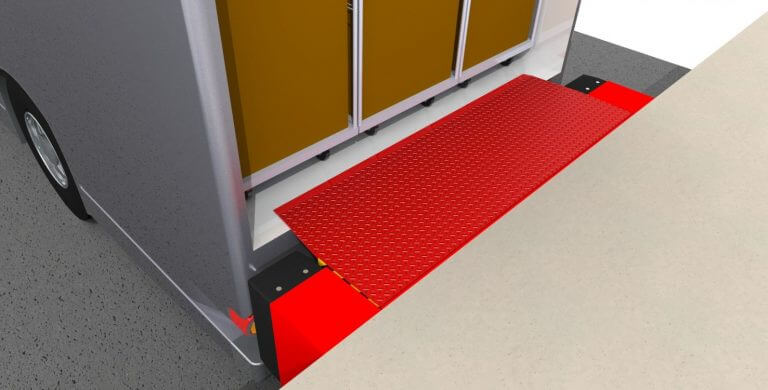In the world of warehouse equipment, there are a few pieces that are essential for constant use. The dock leveller is one of them. Dock levellers are essential pieces of kit, bridging the gap between warehouse floors and stock-carrying vehicles, essential for the safe, efficient movement of stock and equipment. However, in use so much of the time means that they can easily get worn out. It’s important to know when to book a dock leveller servicing appointment.
This means keeping an eye out for clear signs that your levellers are being overworked, along with being aware of the general intervals at which servicing would be beneficial. Loading bay maintenance needs to be taken seriously, which is why this article highlights clear signs of dock leveller wear, along with focusing on the general principles for regular servicing.
Routine dock leveller maintenance can’t be ignored
Before you even think about damage or wear and tear, you need to keep regular maintenance and servicing in mind. The warehousing sector is massive and thriving, meaning millions of kilos of stock pass through loading bays all the time. Dock levellers are an essential part of this equation and need to be treated with the respect they deserve. Make sure that you book in a servicing session with the OEM company every 6 months to 1 year, as these intervals allow for good benchmarks between checks.
Things might appear to be running perfectly smoothly, but that doesn’t necessarily make it so. Regular check-ups and loading bay servicing sessions can act as preventative measures against potential future issues, while also revealing problems that might have otherwise gone unnoticed. For even more comprehensive support, planned preventative maintenance (PPM) can be offered every 3-6 months to maximise dock leveller service life. It’s a surefire way to keep unexpected downtime or expensive damage at bay.
Clear indicators for dock leveller servicing
Beyond the regular servicing that you should treat manual edge, telescopic-lip and swing-lip dock levellers to, there are also plenty of signs that you should look out for.
These can include operational issues, such as:
- Slow, clunky or uneven operation not up to usual standards
- Failure of or incomplete operation – lack of raising or extension
- Sticking in position above or below floor level
- Unusual noises like squeaking, grinding or anything else out of the ordinary
These are all operational signs that your dock leveller needs some TLC, whether due to a worn-out hydraulic system or some other sort of damage.
Similarly, you should keep your eye out for visible damage or wear, even in the less obviously visible places, like:
- Cracks, bends, curves and “dished” platforms or components on the leveller
- Rust or corrosion to an excessive degree (small amounts are to be expected)
- Oil leaks and build-ups, which indicate failures in hydraulic hoses and power units
- Damaged seals and bumpers, which allow for more contamination or easier damage
- If the dock leveller’s deck is misaligned with the floor in rest, it’s damaged
These are the visual cues that every warehouse operator should look out for when caring for their dock levellers. On top of this, you should also just keep the age of your dock levellers in mind, along with any sort of collisions or impacts they might have taken recently.
What you need from dock leveller repairs & servicing
Ideally, you’ll get repairs and servicing from the OEM provider of your dock levellers. This ensures the support you get is from a place of absolute knowledge and understanding. Beyond OEM information, the provider should also offer you:
- 24/7 emergency repair guarantees
- Technical assistance in terms of long-term use or product understanding
- Some spare models for use during repair periods
- Complete product refurbishment if necessary
Keep these principles in mind when caring for your dock leveller setups, seeking out a seller and trusting a servicing provider. With these tips in tow, you’ll keep expensive replacements at bay and minimise downtime in your warehouse.


